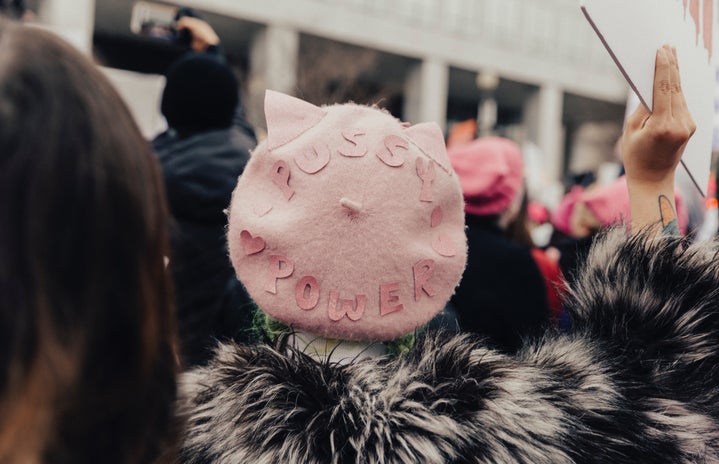Hello, responsible citizen! As you may know, BC’s referendum on electoral reform is fast approaching, so I thought I’d offer a crash course in everything you need to know before voting packages are sent out (October 22 to November 2 . . . get ready!).
If you, like many, are thinking, “Wait . . . what?”, there’s no need to worry. I’ve got you covered!
Most of the information I’ll be giving you can be found on the Elections BC website, where you can find helpful videos and more in-depth information and register to vote.
What do we have now?
Currently, when we vote, we don’t vote with a proportional system. That means that the percentage of votes cast for a party is unlikely to result in that percentage of the power, in the form of seats, being awarded to that party. Different electoral systems have different effects on how government is formed and, depending on what you value, you can choose which electoral system caters most to what you think is important.
Our current system, First Past the Post, tends to result in majority governments (although not all the time, as we can see right now!) and the province-wide vote share for a party isn’t taken into account—only the ballots cast within each district determine which parties have seats in the Legislative Assembly. You will be represented by one MLA whose job is to be informed about and accountable to your district. With First Past the Post, there will often be fewer parties in the legislature, and these parties tend to be larger as well.
What else is there?
With the proportional representation systems that I will teach you about, results are more proportional at the province level (and sometimes at the district level, too). Majority governments are less common, as more votes go towards electing a candidate (so, a greater volume of different voices are heard). Agreements between parties are more commonly made in order to form government. There are often more parties represented in the legislature, and smaller parties have a greater chance of winning seats. There is usually more than one representative that is accountable to each district, and there may be regional representatives who are accountable to each region, which is made up of a number of districts.
What is the referendum about?
This fall, the BC government is going to ask its citizens two questions:
-
Do you want to keep the current First Past the Post (FPTP) voting system or move to a system of proportional representation?
-
Rank three proportional systems: Dual Member Proportional (DMP), Mixed Member Proportional (MMP), and Rural-Urban Proportional (RUP).
Wow, that’s a lot of acronyms. But before I clarify all that, I’m going to confuse you just a bit more. There are three important terms to know when talking about electoral systems: district magnitude, electoral formula, and ballot structure. I know, you feel just like you’re in lecture, but bear with me.
District Magnitude: the number of seats awarded for each electoral district.
Electoral Formula: how votes are translated into seats.
Ballot Structure: how a vote is cast.
First, I’ll start with a quick review of First Past the Post (FPTP). Under FPTP, each district elects one candidate (district magnitude of one). The candidate with the most votes wins a seat (electoral formula). Each voter selects one candidate, one time on the ballot (ballot structure).
If you understand how those terms are applied to the electoral system we already have, it should be easier to understand the options you will get in the referendum.
I’ll just be covering the basics you’ll need to understand how the system works. But, if you’re like me and enjoy talking electoral systems in your spare time, there are lots of resources out there where you can learn more about the effects of different systems and where different systems are used around the world.
CGP Grey has some helpful YouTube videos that I recommend checking out (MMP, STV). Also, there is a club on campus called Fair Vote UVic that are advocates for proportional representation. While they obviously have an agenda, if you’re interested in learning more about proportional representation, they are full of knowledge and resources! And, of course, there are multiple news sites with articles similar to this one that give a rundown on your options. If you’re really, really interested, I’d recommend reading up on New Zealand’s journey with electoral reform, as they switched from FPTP to MMP, which is one of the outcomes that could happen in this referendum. So far, New Zealand seems to be doing just fine!
What are the different proportional systems?
Dual Member Proportional
Okay, first up we have Dual Member Proportional (DMP).
Let’s go through our terms:
District Magnitude
DMP has a district magnitude of either one or two. Many current districts would be combined with neighbouring districts, and those districts would be represented by two Members of the Legislative Assembly (MLAs). Geographically large districts will still be represented by only one MLA.
Ballot Structure
In DMP, depending on whether you live in a one-MLA or two-MLA district, you will have a different ballot structure. In two-MLA districts, each party can have 1–2 candidates on the ballot. Parties have to choose a primary and a secondary candidate and each voter can select a candidate (or a pair of candidates from the same party) with ONE vote. In one-MLA districts, everything will be the same as it is right now under FPTP.
Electoral Formula
For the electoral formula, one-MLA districts will be the same (the candidate with the most votes wins). For two-MLA districts, the first seat will be given to the candidate with the most votes (like FPTP). The second seat will be given based on how the party did in the whoooooole province and how the party did in that specific district. Some important people will use a fancy calculation to award parties their seats in districts where they performed best.
The reason second seats are allotted this way is to try and keep the results proportional at the province level. These seats are sometimes referred to as “top-up seats” because they top-up the representation of a party in the Legislative Assembly. The goal is that approximately the same percentage of votes that went to one party end up as seats for that party in the Legislative Assembly. However, for a party to get these top-up seats, they have to win at least 5 percent of the votes province wide. Also, candidates can run as independents—if they win first (or second place in a two-MLA district) in their district, they will win a seat.
Okay, I’ll wait while you read that all again, and then we can move on to our second choice. Don’t worry, though—it gets way more confusing.
Mixed Member Proportional
Now onto Mixed Member Proportional (MMP).
District Magnitude
MMP has two types of MLAs: district and regional. There is a district magnitude of one district MLA in MMP, but there are also several regional MLAs in each region. A region is made up of multiple districts.
Ballot Structure
What makes MMP a bit more complex is the fact that there are multiple ways votes can be counted and ballots can be structured. If MMP is adopted, a legislative committee will be tasked with deciding the particulars of the system. I’ll go through the variables one by one: one vote vs. two votes, and closed vs. open vs. semi-open/semi-closed list. (I promise, this will be simpler than you think!)
One vs. Two Votes
In the one-vote version of MMP, your vote counts twice: once for the candidate (this is for the district seat) and once for that candidate’s party (this is for the regional seat).
In the two-vote version of MMP, you will vote two times. One vote will be for a single candidate for the district seat. The other vote will be for a party, which will go towards electing a regional MLA.
Party Lists
First, it’s important to remember that district seats are elected with FPTP.
Regional seats are elected from party lists. These are lists of candidates that the party puts together of people who can win a regional seat. If you have two votes, then your second vote could be counted three different ways, depending on which of the three party lists styles is chosen. If you have one vote that counts twice, the closed party list is automatically used.
So, let’s learn about what these lists are. A closed list is one where voters vote just for the list as a whole, and candidates will win seats in the party-determined order. An open list is one where voters vote for a single candidate on the party’s list, and these candidates are awarded seats based on how they performed. With a semi-open (or semi-closed) list, voters can vote either for a candidate, or just for the list. Again, with some fancy calculations, the order of candidates is determined by how they perform and where the party placed them on their original list.
Again, parties have to get at least 5 percent of the vote province wide to get any regional/top-up seats.
The picture below shows an example of a two-vote, closed list ballot.
Rural-Urban Proportional
We’re almost there, I promise! Last, but not least, we have Rural-Urban Proportional (RUB).
RUB combines two voting systems: Single Transferable Vote (STV) and MMP. Yay, more acronyms!
There are two different types of districts in RUP: urban, semi-urban, and rural. Urban and semi-urban districts will use the STV system to elect multiple MLAs in their districts. In rural districts, voters will use MMP to elect district and regional MLAs. We know MMP, so I’ll just explain STV for urban and semi-urban districts.
Single Transferable Vote (STV)
STV uses a ranked system as its ballot structure. Each voter ranks as many or as few candidates as they like (1, 2, 3, etc.) and parties can run as many candidates as they would like, too. Candidates from the same party will be running against candidates from other parties and from their own party.
We know the electoral formula for MMP already, but STV is very different. Each district will have a minimum number of votes that is required for a candidate to win a seat (this is called a quota and will be different in each district, as it is calculated by taking into account the population and number of seats in a district).
Any candidate who reaches the quota will get a seat. If a candidate is elected, but has more votes than the quota (more votes than they needed to get elected), then their extra votes are transferred to a candidate who didn’t get elected. If the candidate you ranked first receives more votes than the quota, your second place candidate will receive your vote (in some countries, a calculation is used that gives all second, third, etc. place votes less weight than a first-place vote and in others a random selection of ballots are used). Ballots are then counted again to see who reaches the quota now. Counting and transferring and re-counting continues until all the seats in the district are filled. The goal of this is to make sure there are no “wasted” ballots, as nearly all ballots are used in some way to elect a candidate.
You did it! Give yourself a round of applause and pat yourself on the back! All done? Great, because now it’s time to make sure you are registered to vote! Go turn this knowledge into power and make sure you share your voice this fall—voting is important, and how we get to do it is, too.


